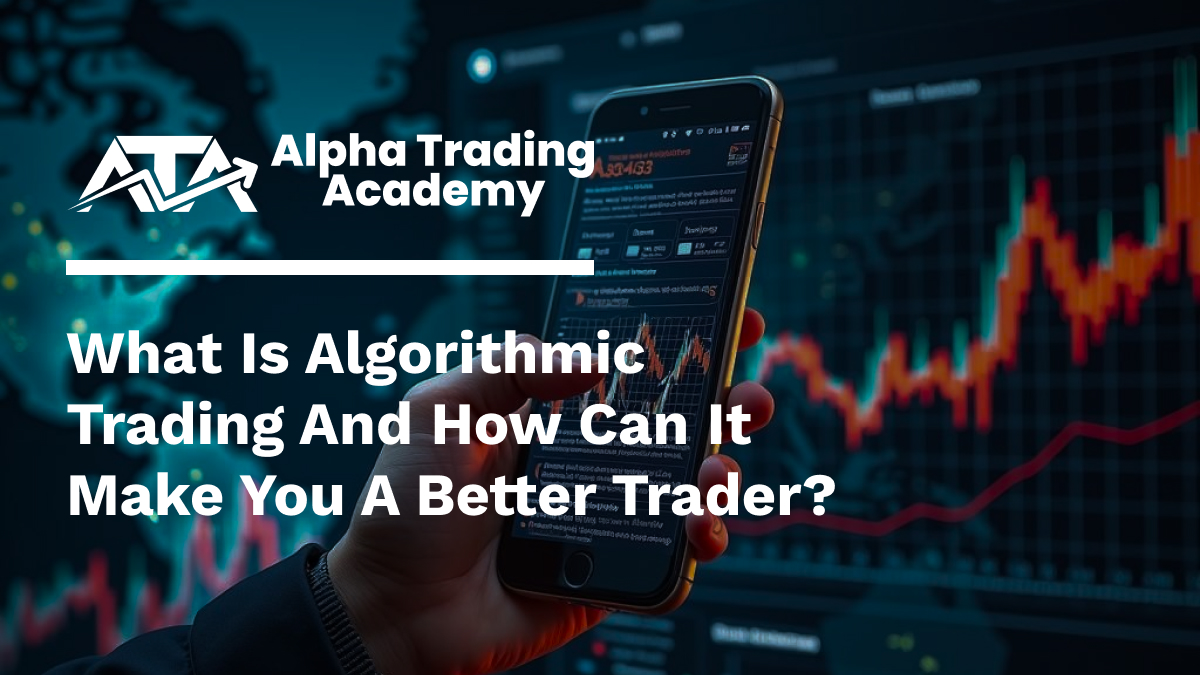Have you ever wondered how some traders react faster than lightning when markets move? Before you even click buy they’ve already made the profit and exited. That’s not superhuman speed, that’s Algorithmic Trading also prominently known as algo trading. In today’s stock market more than 70% of the global trades are made by algorithms not humans. Even in India algo trading is growing fast among brokers, hedge funds and even retail traders.
What is algorithmic trading?
Algorithmic gradients using computer primer algorithms trades automatically in the stock market. Instead of just sitting in front of a screen deciding when to buy or sell a software program does it for you based on a set of predefined rules. In simple terms you tell your computer if stock rises above 500 these and volume double s buy 100 shares. The algorithm basically waits watches the market and when those conditions are met boom it executes the trade automatically. No hesitation, no emotion , no delay.
These rules can be based on:
- Price
- Time
- Volume
- Technical indicators
- Or even complex mathematical models
Why Does Algorithmic Trading Exist?
Trading is all about timing and precision. But humans also have some limitations
- We get emotional.
- We react slowly.
- We can’t monitor hundreds of stocks at once.
Computers on the other hand don’t get tired or scared; they execute instantly to trade faster, smarter and more consistently.
How does an Algorithmic trading strategy work?
Build a strategy
Firstly you need to define a strategy, a set of rules for buying and selling. For example when the 50 day moving average crosses above the 200 day moving average sell when RSI goes above 70. This becomes the logic behind your trading algorithm.
Back test the strategy
Next the algorithm is tested on the historical data meaning how it would have performed in the past. This helps you see if your rules actually work before risking the real money if the results look promising the algorithm is fine-tuned for better accuracy.
Execute Trades Automatically
Once the algorithm is live it:
- Scans markets continuously
- Detects matching signals
- Places orders automatically
- Manages risk (through stop-loss or target rules)
Who uses algorithmic trading?
| User Type | Purpose |
| Institutional Investors | To execute large orders without affecting prices |
| Hedge Funds | To exploit small, short-term opportunities |
| Brokers | To provide liquidity and faster execution |
| Retail Traders | To automate their strategies and avoid emotion |
At first the trading was used mainly by big players, investment banks, hedge funds and institutional investors. But now thanks to technology and online trading platforms even retail traders can access it instantly.
Types of algorithmic trading strategies
Trend following strategies
These are the most popular; they follow indicators like moving averages, breakouts or momentum. You actually buy when the stock price crosses above the 50 day moving average and sell it when it crosses below. Simple logic and often effective.
Arbitrage strategies
This takes advantage of price differences between two exchanges or markets humans cannot do it quickly but algorithms can in milliseconds.
Mean reversion strategies
This assumes that the price tends to return to the average width time. For example if a stock usually trades around ₹200 but suddenly drops to ₹190.00 algorithm might by expecting it to move back towards ₹200.
Market making strategies
It is basically used by brokers or high frequency traders. The algorithm places buy and sell orders around the current market price to earn small profits from the difference. For example you can buy ₹100 then select 100.10 hundreds of times a day.
Scalping algorithms
Super short term strategy that makes dozens or hundreds of trades per day for tiny profits. It’s all about volume and speed, not holding positions for too long.
Benefits of algorithmic trading
Algorithms react in milliseconds faster than any human can that gives you an edge in the fast moving markets. There is no fat finger mistake, the program executes exactly what your code does. No panic selling, no greed , no I’ll just hold just a little longer. Algorithms basically trade based on data not feelings. You can also test your strategy on years of market data before going live. Because algorithms execute effectively they can help you reduce brokerage and slippage costs.
The risks and challenges of algorithmic trading
If there is even one mistake in your code it could execute wrong traits and cause big losses. Sometimes the traders tune the algorithms to perform perfectly on past data but they fail in real markets. Power cuts, Internet dropouts or server issues can interrupt our execution.
How to start algorithmic trading?
Understanding the trading markets and risk management first is very important. Then you can learn how algorithms work. Many brokers in India now support algorithmic trading through APIs. The platforms make it very easy for you to create algorithms visually, no heavy coding required. Always start small, don’t jump into high frequency or complex strategies. Use historical market data to check if it worked in the past. Most platforms offer back testing features. If it performs well across different times, move ahead. Before using real money, test it in simulation mode. This will help you see how it reacts in real time without losing money once you’re confident deploy your algorithm in the live market, start small monitor performance and improve overtime.
Want to learn algorithmic trading?
If it all sounds exciting but technical don’t worry you can learn it step by step through structured courses at Alpha Trading. Even if you’re a beginner the program can help you understand the technology that drives modern markets.
The world of trading is changing and algorithms are leading the way. Whether you trade stocks forex or crypto automation gives you the edge that manual trading simply cannot match but remember algorithms don’t guarantee profits. This simply helps you trade smarter, faster and more consistently. Start small, learn constantly and build your strategy. And one day you will look back and realize you didn’t just become a trader you became a systematic one.





